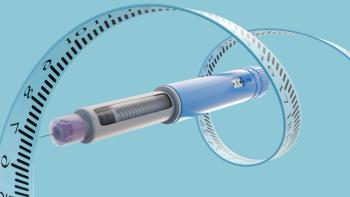CASE 1
Vitamin D and calcium
DF is a 7-year-old girl who comes to the pharmacy with her father in search of an OTC calcium and vitamin D supplement. DF’s father explains to the pharmacist that his daughter does not like drinking milk and he is worried it could affect her ability to grow strong, healthy bones. They present to the pharmacy requesting a pharmacist’s assistance with considering an OTC calcium and vitamin D supplement.
Q: What should the pharmacist recommend to DF and her father at this time?
A: The pharmacist should recommend that DF and her father first consult with their pediatrician before initiating OTC dietary supplements. It is recommended that girls aged 4 to 8 years consume 600 IU of vitamin D per day and 1000 mg calcium per day to meet daily nutritional goals.1,2 The current Dietary Guidelines for Americans suggest that girls aged 4 to 8 years consume 2.5 cups of calcium-rich dairy products each day to meet their nutritional needs.1 For children like DF who do not drink milk, this can be achieved with alternative foods such as yogurt, cheeses, and fortified soy beverages. Similarly, fortified beverages can help DF meet her dietary requirements of vitamin D.1,2 If, despite these suggestions, DF is still unable to meet the recommended daily intake of calcium and vitamin D, OTC supplement products containing these recommended amounts may be considered to assist DF with meeting her intake requirements.1,2
About the Authors
Kylie Helfenbein, PharmD, is a PGY-2 pharmacy resident at Atlantic Health System in Morristown, New Jersey.
Deanna Fox, PharmD, is a PGY-2 pharmacy resident at Atlantic Health System in Morristown, New Jersey.
Rupal Patel Mansukhani, PharmD, FAPhA, NCTTP, is a clinical professor of pharmacy practice and administration at Ernest Mario School of Pharmacy at Rutgers, The State University of New Jersey, in Piscataway and a transitions-of-care clinical pharmacist at Morristown Medical Center in New Jersey.
CASE 2
Vitamin B12
KP is a 1-year-old boy who currently follows a vegetarian diet at home, and his pediatrician recently recommended initiation of daily vitamin B12 supplementation. His mother presents to the pharmacy counter requesting to talk to a pharmacist regarding the role of vitamin B12 supplementation and selection of an appropriate OTC vitamin B12 product for KP.
Q: What counseling points and recommendations should the pharmacist give KP’s mother?
A: The pharmacist should counsel KP’s mother that vitamin B12 is an essential vitamin obtained from the diet, and there is a risk of deficiency among children with a vegetarian diet who do not consume animal-based foods.1,3 Alternative options for meeting daily intake recommendations of vitamin B12 include fortified foods such as cereals and beverages with or without vitamin B12 supplementation, as recommended by KP’s pediatrician. The recommended intake for children aged 12 to 23 months is 0.9 μg per day, which may be supplemented by OTC products available in chewable and liquid formulations for children.1,3
CASE 3
Infant vitamin D supplementation
LM is a 1-week-old girl whose mother comes to the pharmacy asking for help purchasing a vitamin D supplement for her newborn. She explains that her pediatrician has recommended initiation of vitamin D supplementation for LM while breastfeeding, but she is not sure which product is best suited for LM or how much she needs on a daily basis.
Q: What should the pharmacist recommend to LM’s mother at this time?
A: Both the American Academy of Pediatrics and the Dietary Guidelines for Americans recommend that all exclusively breastfed babies younger than 12 months receive 400 IU of vitamin D per day starting soon after birth.1,2 Infants in this age group should continue to receive vitamin D supplementation at the discretion of a pediatrician until they are able to meet their daily needs with full feeds of 32 oz of vitamin D–fortified infant formula per day or consumption of a varied diet. LM’s mother should be counseled that liquid vitamin D products such as oral solution or drops would be the best option while LM is exclusively breast feeding or bottle feeding.2 LM’s mother can be counseled to follow instructions on the product packaging to administer the appropriate quantity of liquid vitamin D formulation each day.2
CASE 4
Iron drops
MR is a 6-month-old boy brought into the pharmacy by his mother after visiting the pediatrician’s office. MR’s mother explains that her pediatrician recommended coming to the pharmacy for assistance with initiating OTC iron supplementation for MR based on his age and exclusively breastfed diet up to this point. MR’s mother is wondering about the role and amount of iron supplementation needed for MR at this time.
Q: What counseling and recommendations should the pharmacist provide?
A: The pharmacist should counsel MR’s mother that exclusively breastfed infants are generally able to maintain their iron status with body stores through the first 6 months of life, after which they often require supplementation due to low iron content in human milk.1 MR’s mother should be counseled to discuss dietary options with her pediatrician once they are ready to start incorporating complementary foods such as iron-fortified cereals, meats, and seafood into MR’s diet. While MR remains exclusively breastfed, it is important to provide iron supplementation to support a recommended intake of 11 mg of iron per day and prevent deficiency.1 This can be achieved with OTC products such as oral solutions or drops to facilitate ease of administration.
References
1. US Department of Agriculture, US Department of Health and Human Services. Dietary Guidelines for Americans, 2020-2025. 9th ed. December 2020. Accessed December 28, 2023. https://www.dietaryguidelines.gov/sites/default/files/2020-12/Dietary_Guidelines_for_Americans_2020-2025.pdf
3. Vitamin B12: fact sheet for professionals. National Institutes of Health. Updated December 15, 2023. Accessed December 28, 2023. https://ods.od.nih.gov/factsheets/Vitaminb12-HealthProfessional/


















































































































































































































